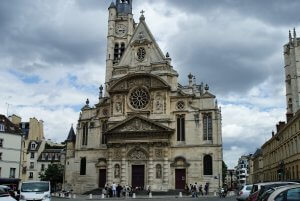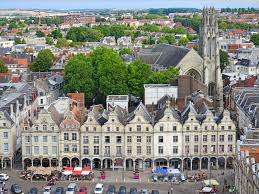Stained Glass Widows
Beauty Throughout History
The use of stained glass art in churches and other important buildings started over a thousand years ago. No other sight on Earth evokes more emotion and gives more comfort that the light of the sun shining through a piece of stained glass artwork. The architectural splendor of ancient and modern buildings in towns and cities all over France rivals anywhere on the planet.
La Sainte-Chapelle tells a rich historical tale with splendor and elegantly constructed stained glass windows that go from the floor to the ceiling, bathing patrons with warm light. This royal medieval Gothic chapel on the Île de la Cité in Paris was consecrated in 1248 to hold the Passion relics of King Louis IX. Lower walls with small windows in a characteristic spherical triangle shape grace the outside, but the true splendor is found in the interior and the stained-glass windows.
The Saint-Étienne-du-Mont near the Panthéon was constructed in the 6th Century and holds the shrine of St. Geneviève. It has a mix of Renaissance and Gothic architectural styles with glass windows and stained glass to light the gallery. The present-day abbey was finished in 1626 after a growing population of patrons forced enlargement of the church during the Middle Ages. The parish church Église paroissiale Saint-Joseph in Brittany, France was completed in 1875.

Constructed of granite and rubble with an open bell tower chamber. Large bays of windows light the arched vaults, square pillars, and granite floor in a glow of celestial wonder. The town hall and bell tower of Arras, France overlooks the Place des Héros and was Gothic inspired. Construction finished in 1554 and the tower has been a symbol of freedom for generations. A statue of a lion displaying a sun graces the bell tower.

The people of Arras added an emblem of Louis XIV to show goodwill to the French Monarchy. Tall, palatial windows surround the building and the windows in the bell tower still have the feel of 16th Century France. Calais Town Hall is another example of a building with stunning windows. Designed neo-Flemish with Tudor details, this building now symbolizes the merger of the towns of Saint-Pierre and Calais in 1885. Construction began in 1911 and the building was inaugurated in1925 with beautiful chimes ringing over the small town from the belfry.